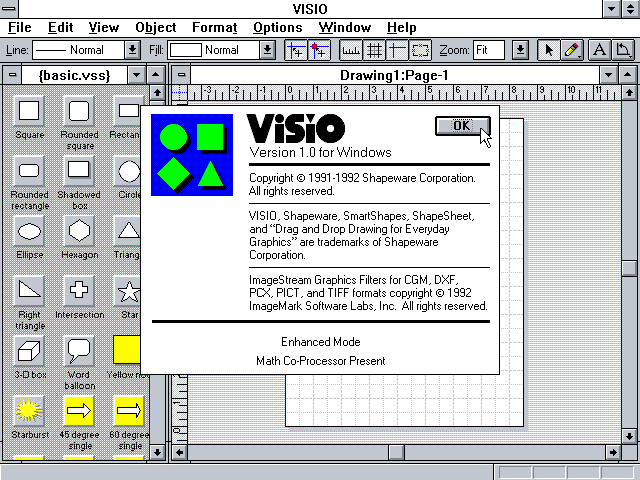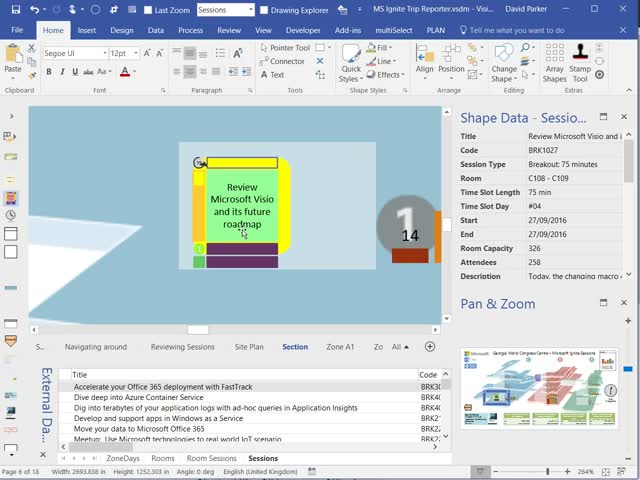Microsoft Visio: Creating Diagrams, Flowcharts
May 22, 2019

Just in time for the turn of the millennium, Microsoft bought Visio, including the software of the same name, for a total of 1.3 billion US dollars. The large corporation adapted the visualization program to its own ideas and published it as part of the Microsoft Office family under the name Microsoft Visio.
Since then, new versions of the tool have appeared regularly, although it has never been part of one of the various office suites. In the meantime Visio is not only available in the two editions “Standard” and “Professional”, but also as a paid version for Office 365 in the https://www.techulator.com/resources/18312-the-easiest-ways-to-download-and-install-microsoft-visio.
However, a glance at the scope and costs of the program quickly reveals that the application is primarily intended for professional use in larger companies – which is probably also the main reason for the comparatively low distribution. If the available budget is too low for the acquisition of the expensive Microsoft software or the program is simply too complex for the intended use, inexpensive or even free solutions are usually the better choice. In this article, we have looked at the various free alternatives to Microsoft Visio and compared them with Microsoft’s visualization program.
Slide
Dia is a visualization software from the developers of the GNOME Project, which is primarily known by the Linux desktop environment of the same name, GNOME. The alternative to Microsoft Visio is based on the GIMP Toolkit (GTK+) written in C – a free component library that provides various controls for designing graphical user interfaces. As typical for GNOME Project applications, Dia is available under the GNU General Public License for free use.
Most Linux distributions contain the installation files for the program in the package manager, alternatively these are also part of the GNOME software range. In addition, versions for macOS and Windows systems exist, which can be found in the download center of the official website.
Dia offers a standard set of general polygon and line objects that you can use to create diagrams and flowcharts for various industries. For example, you can create an overview diagram of the company network as an administrator, sketch static systems as a civil engineer, or visualize ER models (Entity Relationship Model) as a database specialist. If you miss special objects for the realization of your diagram, you can find additional copies in the online “treasure trove”.
To make the work process as simple as possible, the Microsoft Visio Alternative offers numerous options and shortcuts for selecting and deselecting, copying, deleting or duplicating individual or multiple objects. You work in the clearly arranged drawing area which, thanks to the coordinate system, enables the exact placement of the individual elements.
yEd Graph Editor
The yEd Graph Editor from the German software company yWorks is undisputedly one of the best free Microsoft Visio alternatives on the market. The visualization software is written in Java and is based on different open source components like the Batik SVG Toolkit and XML Beans from Apache or different libraries like dom4j and TwelveMonkeys (both under BSD license).
However, it is not released under a free license – the source code must not be changed. yWorks has released the cross-platform editor, which is available for Windows, macOS, Linux and the Java runtime environment, for free use. In addition to the desktop versions, which you can find in the download area of the official homepage of the manufacturer, there is also an English online version, which also contains “Pro-Features” for a fee.

yEd provides numerous elements for the design of versatile diagrams. In addition to a large number of geometric nodes and edge types, there is a selection of UML (Unified Modeling Language) symbols for software-specific class and object diagrams, BPMN (Business Process Model and Notation) symbols for representing business processes, and some flowchart elements. The alternative to Visio helps you to arrange and label the components used in your diagram according to your requirements with various functions.
There are automatic layout algorithms, guides and orthogonal connections that make positioning child’s play. On the other hand, the program automatically arranges labels and makes them readable.
yEd Graph Editor offers six standard memory formats
The main format is .graphml as well as the compressed variant .graphmlz, the binary format .ygf, .gml (Graph Modeling Language) and .xgml (.gml with XML-based syntax) as well as .tgf, the “Trivial Graph” format. There are also various output formats such as .html, .pdf, .jpg, .png or .gif, into which you can export your diagrams with the free alternative to Microsoft Visio.




